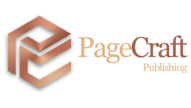Answers to Your Common Questions – Explore Our FAQs
Answers to Your Common Questions – Explore Our FAQs
What is Pagecraft?
PageCraft is a self-publishing company built to become the bridge for authors to achieve their goals for their books from production to distribution.
What are the services we offer?
PageCraft understands the hard work that authors invest to get their books published. But publishing isn’t just about manuscripts and stories. And that’s why, to reward the authors for their trust and hard work, PageCraft built a team of professionals to take care of the quality of their books through our editing, publishing, and marketing services.
What is our accepted manuscript format?
We accept manuscripts in MS Word or PDF format.
What type of Publishing Package do we offer?
Publish black-and-white and colored books.
What are the available book formats?
- Softcover/Paperback
- Hardcover/Hardback
- E-Book
How much Royalty will the Author get for every book sale?
Author gets 100% Royalty once the printing cost, government tax, and reseller’s percentage has been taken off from the agreed book price.
When will the Author receives their royalty?
We release the royalty of our authors every quarter or every three months.
When we publish with PageCraft, who owns the rights to the book?
The author owns the right to the book, and they can decide how to proceed right after publishing.
How much does the author need to pay to publish?
Publishing packages range from $999 up, depending on the inclusions of the package. We tailor it to the author’s book.
Publishing production guidelines for authors who are self-publishing their work:
1. Manuscript Preparation:
– Ensure that your manuscript is complete and thoroughly edited for content, grammar, and style.
– Format your manuscript according to the requirements of your chosen publishing platform or printer. This may include specific margin settings, font styles, and line spacing.
2. Cover Design:
– Create or commission a professional and eye-catching cover design that accurately represents the content of your book and appeals to your target audience.
– Ensure that the cover design meets the specific dimensional requirements of your chosen publishing platform or printer.
3. Interior Layout:
– Format the interior of your book, including chapter headings, page numbers, and any special formatting for images, tables, or other visual elements.
– Ensure that the interior layout meets the specific requirements of your chosen publishing platform or printer, including file format and dimensions.
4. ISBN and Copyright:
– Obtain an International Standard Book Number (ISBN) for your book, which is required for most retail distribution channels.
– Consider registering your copyright to protect your work. While copyright registration is not required to secure copyright protection, it can provide additional legal benefits.
5. Publishing Platform Selection:
– Research and select the most suitable publishing platform(s) for your book, considering factors such as distribution options, royalties, and marketing tools.
– Determine whether you will publish in print, e-book, or both formats, and select the appropriate distribution channels for each.
6. Printing and Distribution:
– If you are publishing a print edition, select a reputable print-on-demand (POD) service or printer for your physical book production.
– For e-books, ensure that your files are properly formatted and optimized for the intended distribution channels, such as Amazon Kindle Direct Publishing, Apple Books, or other e-book retailers.
7. Marketing and Promotion:
– Develop a comprehensive marketing plan to promote your book, including strategies for social media, the author’s website, book signings, and other promotional activities.
– Leverage your author platform and network to build anticipation for your book launch and generate early sales.
8. Quality Control:
– Obtain physical and digital proofs of your book to review for any formatting or printing errors before final publication.
– Conduct a final review of all book details, including cover design, interior layout, and content, to ensure everything is accurate and meets your expectations.
9. Launch and Distribution:
– Set a release date for your book and coordinate with your chosen distribution channels to ensure that your book is available for purchase on or before that date.
– Utilize pre-order options, if available, to generate early sales and build momentum for your book launch.
10. Post-Launch Activities:
– Monitor sales and reader feedback, and adjust your marketing efforts as needed to maximize exposure and sales.
– Consider additional promotional opportunities, such as book reviews, blog tours, and author interviews, to maintain momentum and reach new readers.
This guideline provides a general overview of the steps involved in the publishing production process for self-published authors. Keep in mind that specific details may vary depending on the nature of your book, your target audience, and the publishing platforms and services you choose to utilize.
